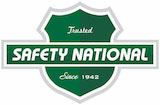Planning Transportation Projects Using 'Ultrasound for Roads'
When transportation officials consider a construction project, they typically drill into the ground to determine the composition of the earth beneath the work site. The information gleaned from those tests helps determine the design or repair requirements, but it’s an imperfect science, as the results can contain information gaps due to differing conditions between drilling locations—even if they’re just feet apart.
In Arkansas, officials address that problem by using non-invasive seismic imaging—a so-called “ultrasound for roads” that uses existing technology to help highway planners more accurately map the subsurface. The project, a research partnership between the Arkansas Department of Transportation (ARDOT) and the University of Arkansas, aims to help road projects stay on schedule and on budget by providing detailed information without the need for exploratory drilling.








